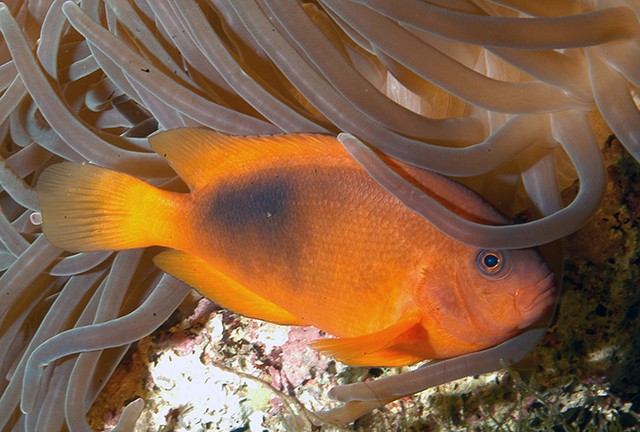| Pomacentridae (Damselfishes), subfamily: Pomacentrinae |
| 14 cm TL (male/unsexed); max. reported age: 16 years |
|
reef-associated; marine; depth range 2 - 15 m, non-migratory |
| Eastern Indian Ocean: Andaman and Nicobar Islands, Thailand, Malaysia, and Java and Sumatra in Indonesia. |
|
Dorsal spines (total): 10-11; Dorsal soft rays (total): 16-18; Anal spines: 2-2; Anal soft rays: 13-14. Description: Orange with a black blotch below the anterior portion of the soft dorsal fin which varies in size from about twice the eye diameter to almost covering whole posterior half of the body. Juveniles lack the black blotch but have a white bar running just behind the head (Ref. 7247). Body depth 1.7-2.0 in SL (Ref. 90102). |
| Adults are found in silty coastal waters and protected bays where visibility is often reduced. Usually found in pairs (Ref. 48636). Oviparous, distinct pairing during breeding (Ref. 205). Eggs are demersal and adhere to the substrate (Ref. 205). Males guard and aerate the eggs (Ref. 205). Associated with the anemones: Entacmaea quadricolor and Heteractis crispa (Ref. 5911). Has been reared in captivity (Ref. 35413, 35420). |
|
Least Concern (LC); Date assessed: 16 November 2010 Ref. (130435)
|
| harmless |
Source and more info: www.fishbase.org. For personal, classroom, and other internal use only. Not for publication.

